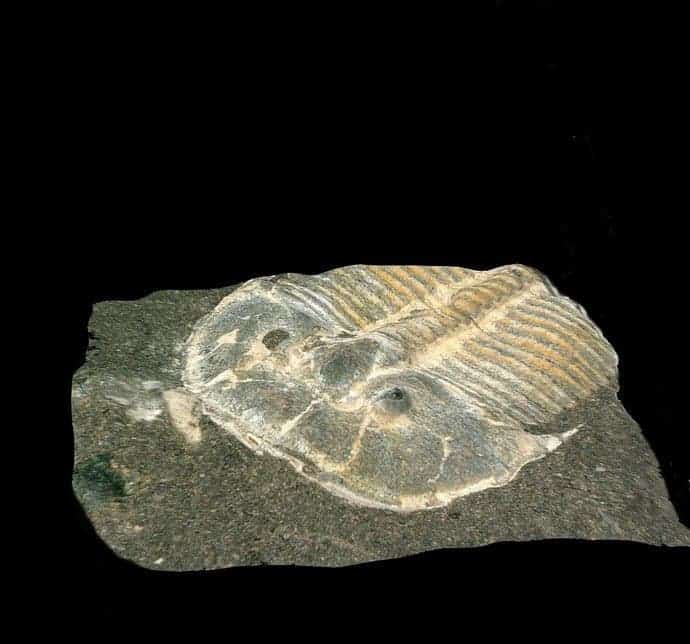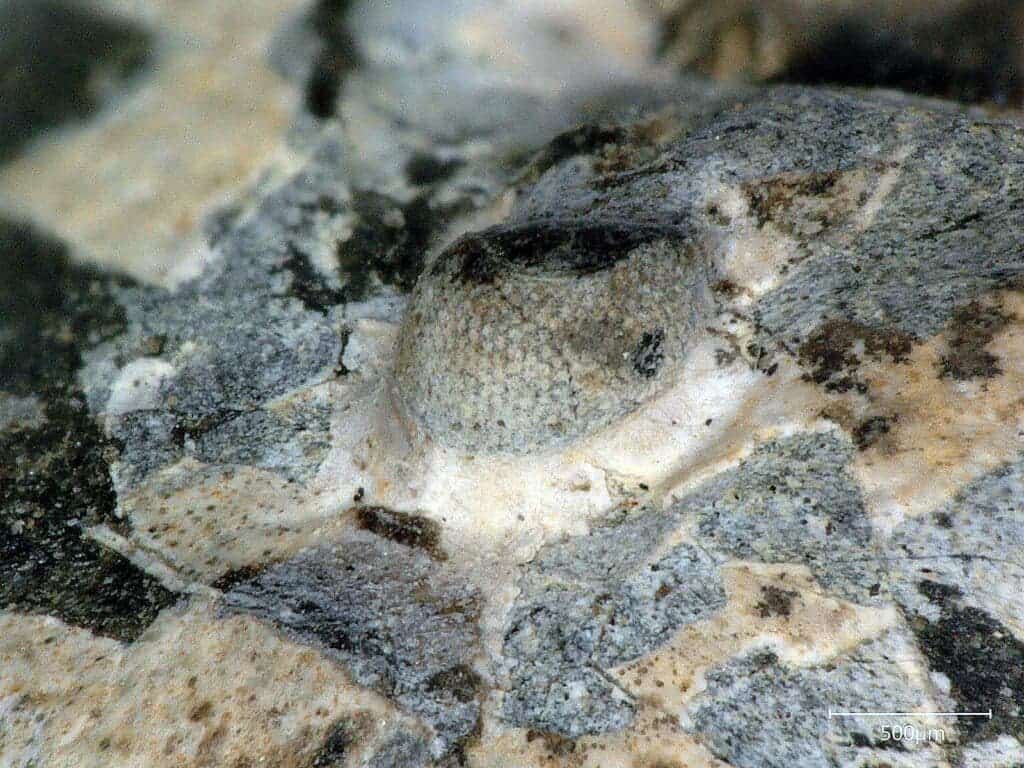
When Brigitte Schoenemann, a paleontologist at the University of Cologne in Germany, bought a trilobite fossil, she meant it as a cute collector’s item. But being an expert on the evolution of vision, the researcher noticed something unusual about her specimen. Turned out that one of the fossil’s eyes revealed the anatomy of the lens and receptor cells. In her new study, Schoenemann shows that the 429-million-year old creature’s eye was remarkably modern, resembling today’s bees and dragonflies.
Most fossils preserve bones, teeth, and other hard tissue. But finding fossilized cellular structures for such a delicate type of tissue such as the eye is truly exceptional.
The fossilized trilobite Aulacopleura koninckii, which is only 1-2 millimeters in height, was discovered in 1846 in the Czech Republic. It has two protruding semi-oval eyes on the back of its head, one of which was broken off.
Using digital microscopy, Schoenemann and colleagues report that a number of internal eye structures are very similar to those of the compound eyes of modern insects and crustaceans.
One such structure is the ommatidia, a visual unit that is made up of light-detecting cells grouped around a transparent tube called a rhabdom (rodlike structures found in the eyes of insects). A thick lens and what looks like a crystalline cone topped each visual unit, directing light through them before being focused onto the rhabdom.

So how did it see? Very differently from humans, that’s for sure. Eyes made up of dozens of facets would have generated a mosaic of images, where each image captures a snapshot of the trilobite’s environment. This would have made the creature well adapted to distinguishing obstacles, shelters, shapes, and other organisms — particularly predatory cephalopods known to feast on trilobites.
These findings point towards the fact that the vision of modern insects and crustaceans is based on adaptations gained over half a billion years ago.
Trilobites were highly successful, first appearing around 520 million years ago during the Cambrian explosion, an age when biodiversity suddenly swelled exponentially. The three-lobed creatures flourished in the ancient seas, ranging in size from as small as a fingernail to as large as a small car. They eventually went extinct about 250 million years ago, before the rise of the dinosaurs.
Drawing from previous examinations of trilobites, the researchers in Germany also inferred the habitat of Aulacopleura. Judging by its eye anatomy, the ancient creatures likely lived in bright and shallow water. It must have also been most active during the day.
The findings were reported in the journal Scientific Reports.









